- Mahsa S. Y.
- HandiCrafts
- 2311 views
- 4 comments
Briefly, Pottery glaze is the finishing step of creating a piece of pottery art to make it shiny, food-safe, and more stunning. This blog post introduces pottery glaze and its types, from traditional salt glazes to contemporary raku and shino pottery glazes, methods of glazing the pottery, and how to prevent Crazed Pottery.
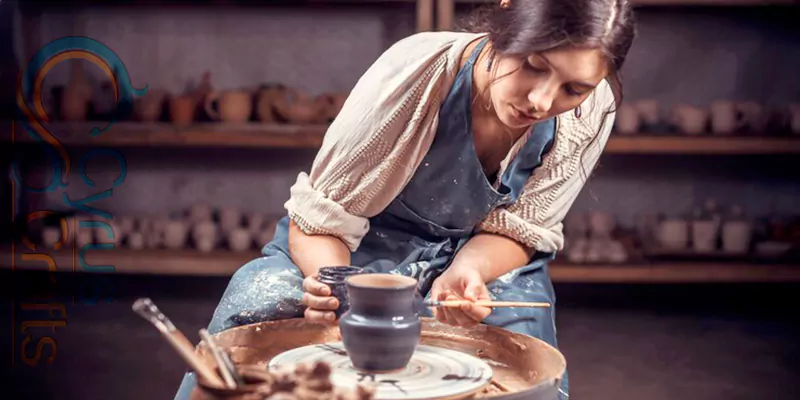
What is Pottery Glaze?
Pottery or ceramic glaze is a protective layer applied to ceramic ware to add color and texture. It includes different materials, such as minerals and oxides, to achieve desired effects after kiln firing. Pottery glaze includes various types, and you will study the most popular and useful of them in the following sections of the passage.
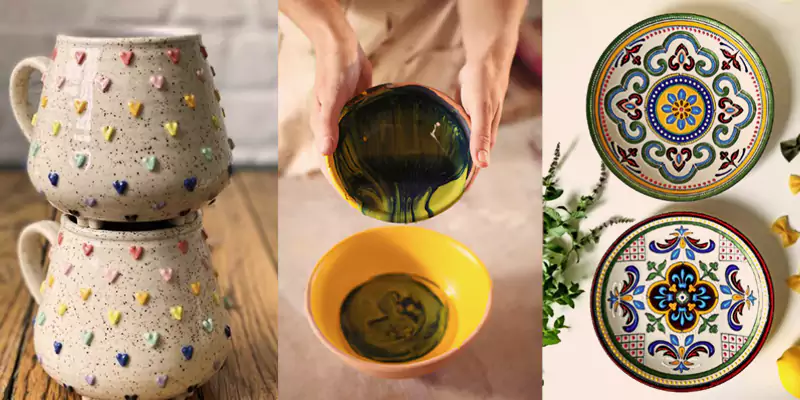
Types of Pottery Glaze
There are various types of pottery glaze, such as Ceramic Glazed Pottery, Ceramic Glaze Painting, Salt Glaze Ceramics, Raku Pottery Glazes, Clay Glaze, Shono Pottery Glaze, Chun, Tenmoku, Oxide, Cone 6, and Lead glaze, etc. Nevertheless, to prevent you from getting bored, we will review the most popular and important ones, from the rustic charm of salt-glazed pottery to the vibrant hues of raku glazes. You can visit different types of handmade glazed pottery by clicking on the following picture.
Ceramic Glaze for Pottery
Ceramic glaze is an essential ingredient that transforms plain clay objects into artistic creations. Ceramic glaze for pottery makes vessels their unique stand-out. A ceramic glazed pottery doesn't look plain and unremarkable. When applied and fired correctly, ceramic glaze creates a smooth, glossy surface, enhancing its appearance and durability.
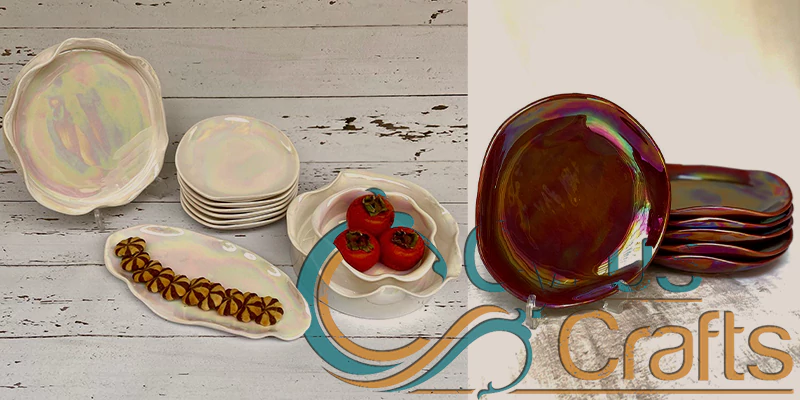
Salt Glazed Pottery
Salt-glazed pottery uses a time-honored technique in which common salt is introduced into the kiln during firing. It creates a distinctive orange-peel texture and rich surface effects on pottery tableware or other items.
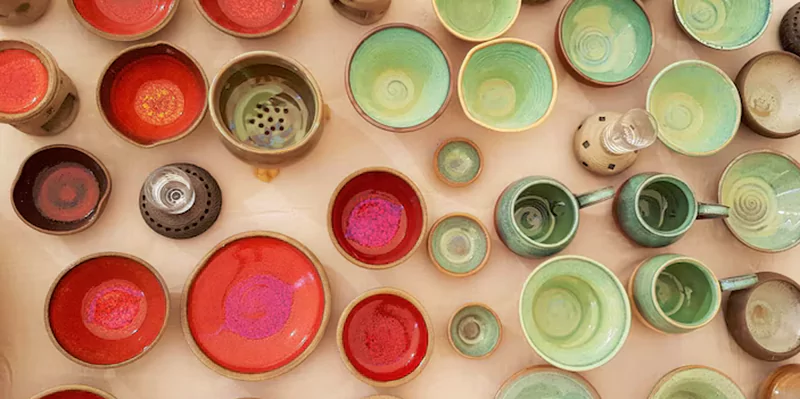
Raku Glaze Pottery
Raku pottery glazes originated in Japan and are characterized by their rapid firing and post-firing reduction process, resulting in picturesque color variations and metallic luster. The raku glaze pottery is one of the most cherished entities.
Cyrus Crafts; Luxury & Unique Products
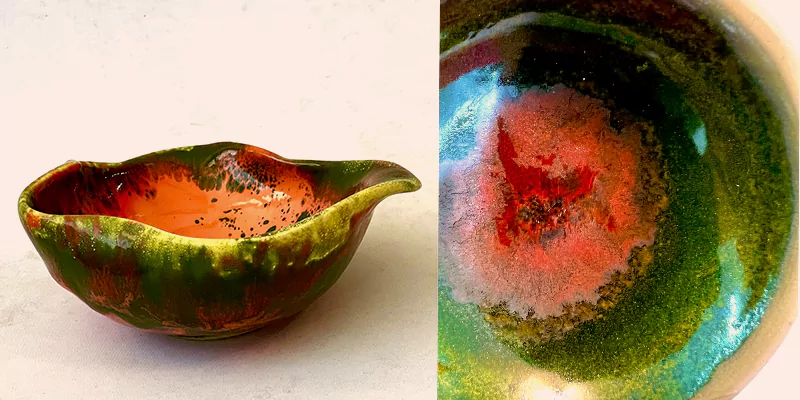
Clay Glaze
Clay glaze, known as earthenware glaze, is formulated from naturally occurring clay minerals and fluxes. It is levered for its earthy tones and rustic aesthetic, which can provide a natural impression to your interior design and decoration.
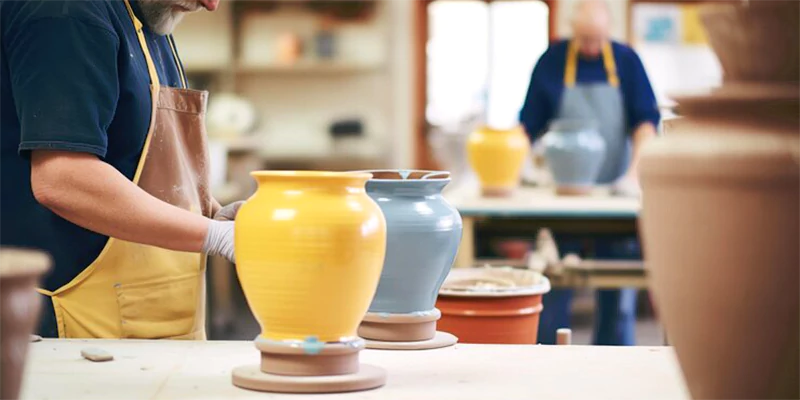
Shino Pottery Glaze
Shino glazes, inspired by traditional Japanese pottery, are known for their creamy white surfaces and subtle crackling effects, achieved through unique firing and reduction techniques.
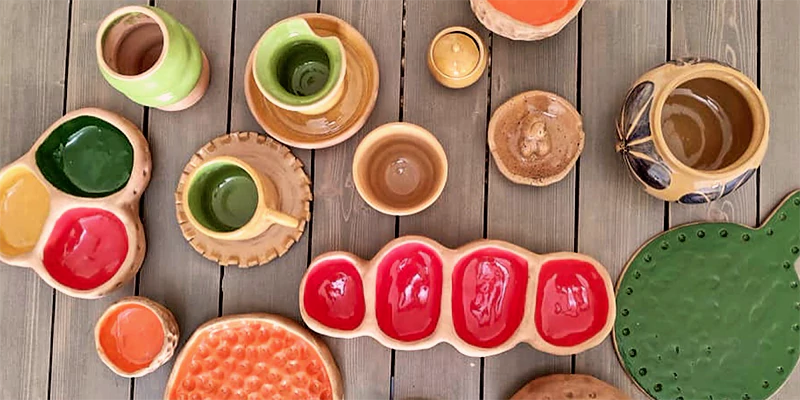
What is Crazed Pottery?
Crazed pottery contains cracks or crazing on the glaze surface. While some people may view crazing as a flaw, others see it as a decorative element that adds character to pottery. So, it totally depends on your taste whether you like crazed pottery tableware or common ones.
You can apply the crazing technique to unify your homeware items, such as serving platters. Clicking on the picture below will lead you through a collection of serving dishes.
As mentioned before, they are the only well-known types of pottery glazing worldwide. There are many other kinds, and many have yet to be created, that artisans make in their workplaces.
How to Do Pottery Glazing?
If you are a crafter, you should know that glazing pottery is a multistep process that requires precision and artistic imagination. Each step in preparing and applying glaze contributes to the final appearance of glazed ceramic pots.
Before glazing, you may need to paint some designs on your pottery art pieces. So, visit the Pottery Painting Instructions page, then start the glazing process.
Briefly, pottery glazing is applying a liquid mixture of silica, fluxes, and colorants onto pottery pieces before firing them in a kiln. Here's a concise overview of the seven pottery glazing steps:
1. Preparing Pottery for Glazing
Before glazing, ensure the pottery pieces are clean and dry. Bisque firing them beforehand is recommended for better results.
2. Selecting the Glaze Type
Determine the type of glaze you want to use based on the desired finish and color. In addition to the classification you read before, glazes come in different types, such as matte, glossy, opaque, or transparent.
3. Mixing the Glazing Ingredients
If you're using commercial glazes, follow the manufacturer's instructions. If you're making your glaze, mix the ingredients thoroughly according to a recipe, ensuring consistency.
4. Applying the Glaze
Use a brush or sponge or dip your pottery piece into the glaze, ensuring even coverage. Do not leave any bare spots or excessive thickness, affecting the final result.
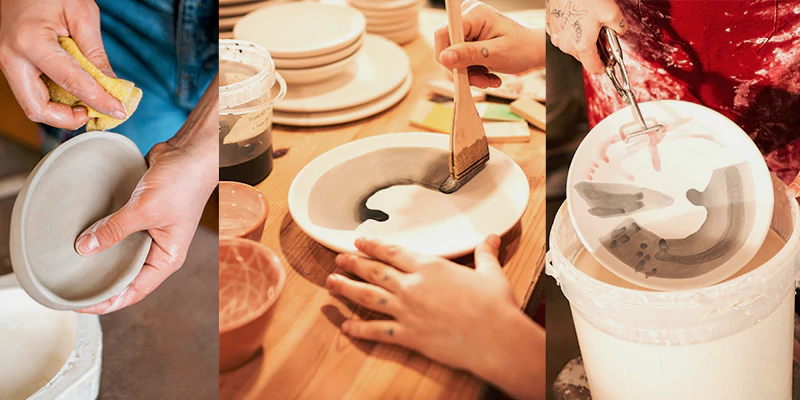
5. Drying the Outcome
Allow the glaze to dry completely before firing. It usually takes several hours, depending on the type of glaze and environmental conditions.
6. Firing in Pottery Kiln
Once the glaze is dry, fire your pieces in a pottery kiln according to the recommended firing schedule for the specific glaze you used. It typically involves gradually increasing the temperature to the desired cone level (temperature) and holding it there for a specified time to allow the glaze to melt and fuse with the pottery surface.
7. Cooling and Inspection
After firing, allow your pottery pieces to cool slowly inside the kiln, or remove them carefully once they cool to room temperature. Inspect the finished pieces for any defects or inconsistencies in the glaze application.
Remember that pottery glazing requires practice and experimentation to achieve desired results, so don't be afraid to try different techniques and combinations of glazes to discover what works best for your creations. Pottery glazing steps are frequently applied to Minakari artworks in Persia. If you need more information about the Minakari art, click on the following image.
Concluding Remarks
In this article, you studied pottery glaze, its different types, how to do them, and what crazed pottery is. If you like this art, you can visit pottery tableware handicraft items on this website. We are the CyrusCrafts group, which presents unique Persian handmade products to the world.
On our website, you can find Iranian rugs, antique decorative items, old Persian art pieces such as Minakari, Khatamkari, Firoozehkubi, etc., wall art, handmade clothes, style accessories, and even tasty organic foods like caviar, pistachio, saffron, and so on. Click on the image below to visit unique handmade desk ornaments that are fine examples of Persian handicrafts.
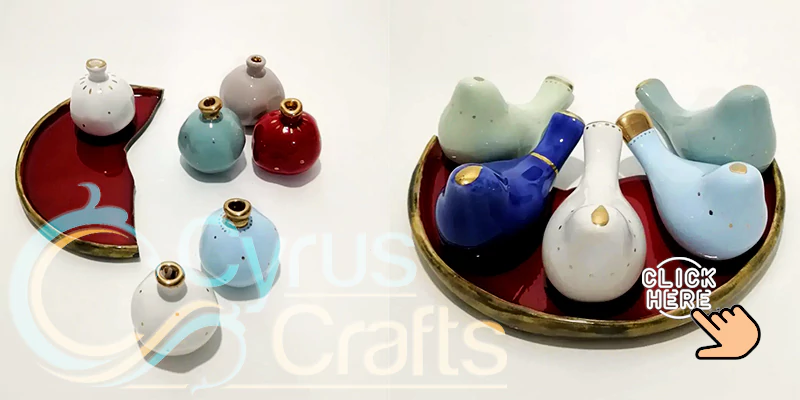
Ordering the products is easy; you should only fill out your chosen item's order form or text us by clicking the WhatsApp icon. After you justify your living zone, we will tell you the shipping and cargo costs, which are very low for Canadian, USA, and Middle East residents.


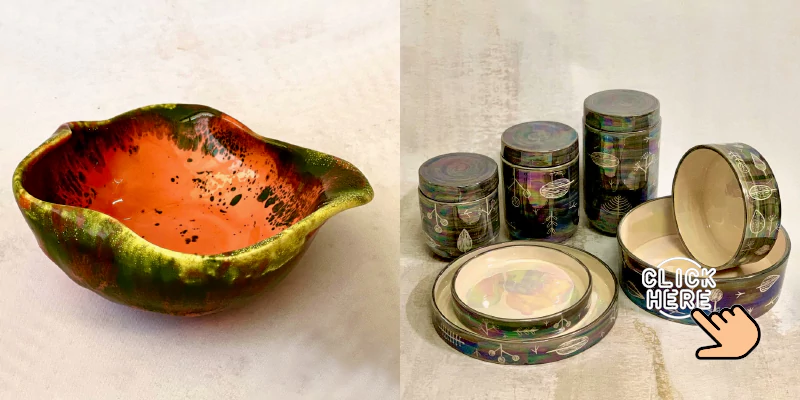
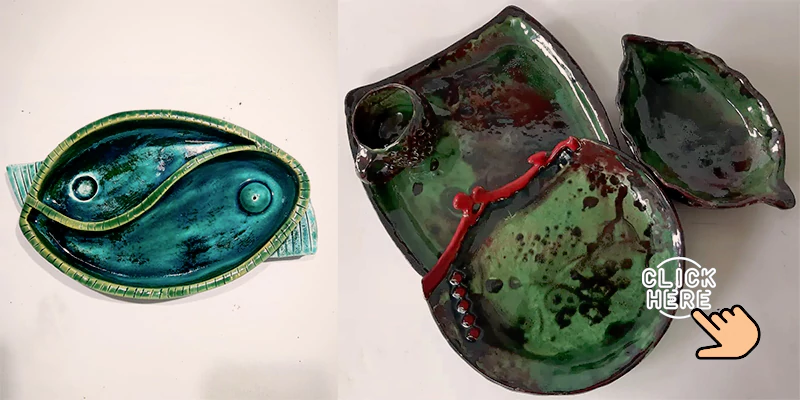
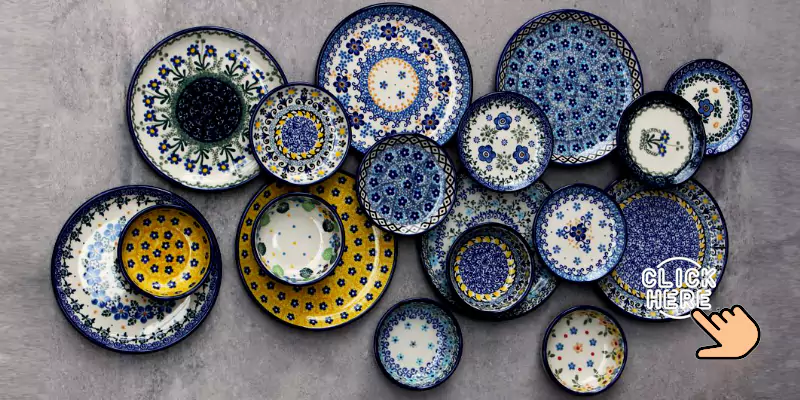






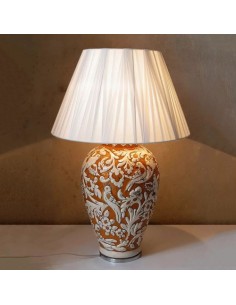

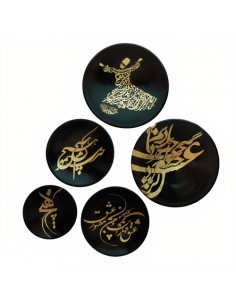

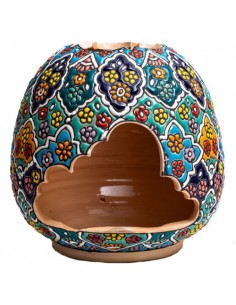

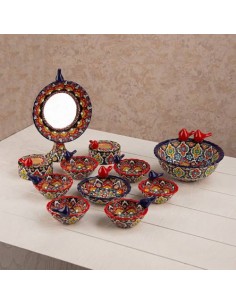

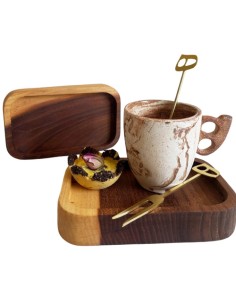

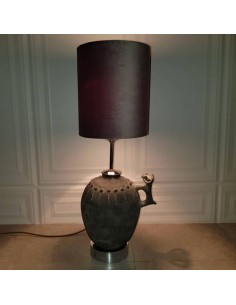

Comments (4)